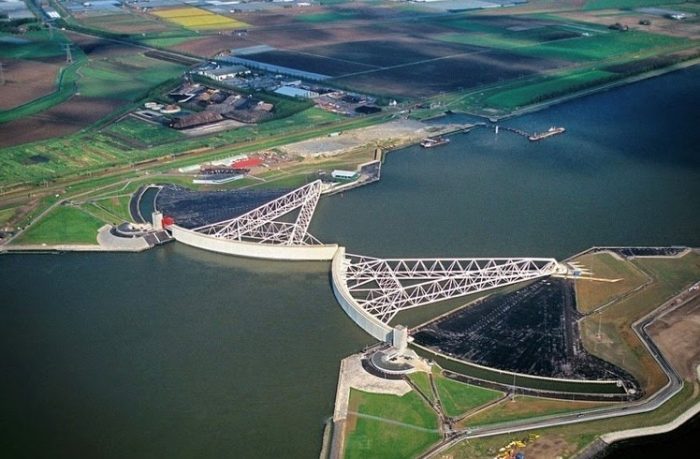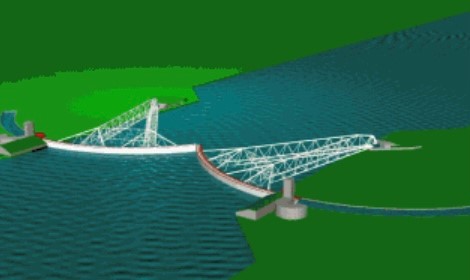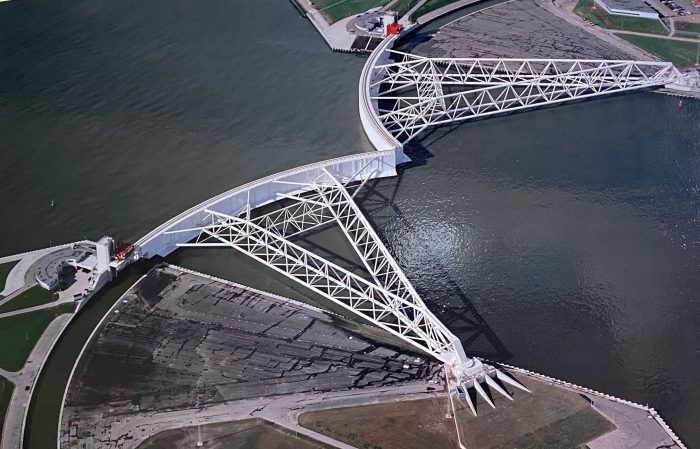Delta Works

The Delta Plan or “Delta Works” (“Deltawerken“, in Dutch), which we visited in Zeeland in the southwest of The Netherlands, is described as “one of the greatest pieces of engineering in Europe.” The American Society of Civil Engineers has named it one of the “Seven Wonders of the Modern World.”

in the world, spanning 9 kilometres (5.6 miles) long. It protects Holland from the North Sea.
Delta Works refers to a massive chain of flood protection structures that were constructed after huge North Sea floods in 1953. It involved laying 13 dams, including barriers, sluices, locks, dikes and levees, to protect the areas within and around the Rhine-Meuse-Scheldt delta from North Sea floods.

Half of the Netherlands is nearly or entirely below sea level. And for more than a thousand years, a series of man-made dikes along the coast have protected the country from the sea. In 1953, the dikes burst and Holland suffered its worst disaster of the 20th Century. The dikes ruptured in dozens of places due to a combination of storms and a spring tide, causing flooding in large parts of the country, which claimed countless lives, as well as the death of tens of thousands of livestock, and many homes destroyed and damaged nationwide. (Flooding happened far inland in the western part of Holland, and likewise flooding also impacted Belgium, England and Scotland at this time.)

The Delta Works is a series of anti-flooding measures designed and built from the 1950’s through 1997, a complex collection of storm surge barriers, locks, sluices, channels, bridges, dams, dikes and gates. The International Federation of Engineers has declared the Delta Works to be the most prestigious hydraulic engineering project in the world, praising its innovative technology, sound structure and sustainability. A large component amongst the Delta Works arsenal are these huge storm surge barriers (shown below) that were constructed in such a way, so that if the water level rises to a dangerous level the barriers automatically close, and water is then prevented from flowing inland via rivers or estuaries.

The Maeslantkering shown above is a storm surge barrier which includes a set of “swinging doors” almost as long as the Eiffel Tower is high, though weighing about 4 times as much! It is the only storm surge barrier in the world with such large moveable parts, each with 237-meter-long truss with ball-socket movement on both banks of the waterway. (These simple illustrations below portray its movement.)
 |  |
Under normal circumstances, these doors remain open, providing a 360-meter-wide passage for ships to pass. If there’s a storm surge of 3-meters-above-normal anticipated, the door automatically starts to float and each arm moves toward the other, closing the waterway. (They are then flooded, and the additional weight causes them to sink, which creates a massive barrier!) I have heard this described as “the world’s largest robot”, as this whole operation is linked to weather and sea level data, and the operation is fully automatic.

Back in 1953, the sea dikes in Holland were a whole different breed, among other things being much too low. The odds of a serious flooding at that time was calculated at one per 80 years.
Through the various elements that the Delta Works created to prevent a repeat of the 1953 flood disaster, including the storm surge barriers, these odds have been lowered to less than one per 4000 years.
All this represents a greater significance than just for The Netherlands. As sea levels rise worldwide, and climate change models project that this trend will continue, many countries could increasingly be confronted with extreme water levels. These type of storm surge barriers could therefore provide significant potential defenses.
